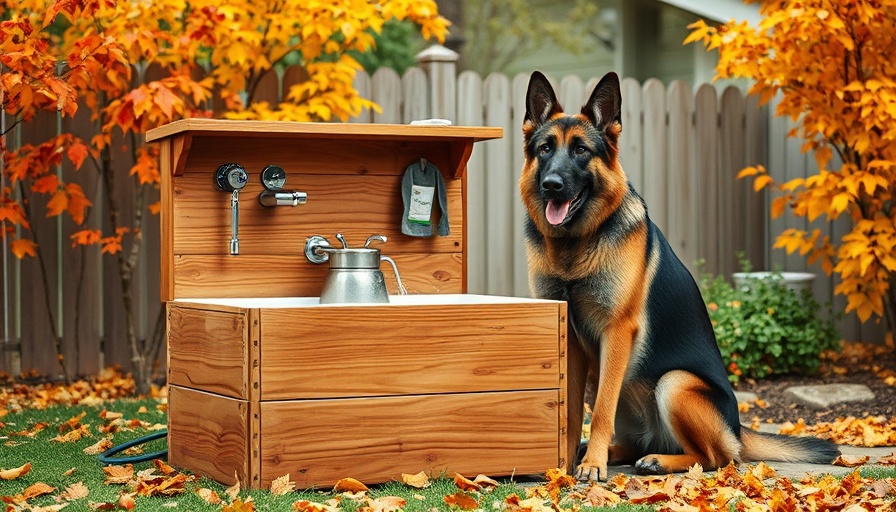
Crafting a Cozy DIY Dog Wash Station at Home
Have you ever considered how much easier bath time could be for you and your furry friend? A DIY dog wash station is not just a convenient addition to your home but a functional solution to one of pet ownership's messier challenges. With the right tools, materials, and a tad bit of patience, you can create a personalized space for bathing your dog right at home!
Why a DIY Dog Wash Station?
Dogs can be delightfully messy, bringing dirt, mud, and who-knows-what else into our homes. A dog wash station is the perfect way to keep your home clean while ensuring bath time is easy and enjoyable for your pet. Not only does it allow you to avoid using your bathtub or shower—areas that often lack the proper setup—but it can also double as a utility area for other chores, such as washing muddy boots or rinsing off outdoor gear.
Materials You’ll Need
- Acrylic or fiberglass shower pan (60” x 36”)
- 16-inch wood pieces (2” x 4”)
- Cement board, plywood, tiles, and a range of plumbing supplies
- Tools like circular saws, miter saws, wet tile saws, and more
Gather these materials, and let’s get started!
Step-by-Step Guide to Building Your Dog Wash Station
Follow these steps to create a dog wash area that's tailored to your needs—from the initial design to the final touches:
- Cut the Wood: Start by cutting your wood pieces to form the structural framework. Use 2” x 4” pieces to create the back and side walls, ensuring durability and support.
- Construct the Back and Side Walls: Assemble the back and side walls, making sure they securely connect to form a solid enclosure.
- Connect the Walls: Once the walls are complete, attach them together using nails for a sturdy build.
- Install the Shower Pan: Position the shower pan into the designated area on top, ensuring it fits snugly.
- Add Tiles for a Stylish Finish: Use thin-set mortar to attach tiles to the enclosure. Not only does this enhance the look, but they also make for easy cleanup!
- Install Drainage: Finally, make sure you install a proper drainage system to avoid water accumulation—this is crucial for any wash station!
Practical Benefits of Your New Dog Wash Station
Building a dog wash station isn’t just about convenience; it’s also about creating a special space that reflects your pet parenting journey. This space will help you manage dirty dogs and muddy paws while adding value to your home. Additionally, it can be adapted for other uses, such as washing outdoor items or bathing your children, thus maximizing its utility.
Common Misconceptions About DIY Projects
Many homeowners are hesitant to try DIY projects, fearing they may not have the skills or time. However, a dog wash station can be built with basic tools and a clear plan. By following step-by-step instructions and taking your time, you can foster creativity and satisfaction in creating something useful.
So, whether you’ve resolved to tackle more home renovations or simply want to make life easier for you and your pet, get started on your very own DIY dog wash station today! Not only will your pet thank you, but you'll also be proud of your handy work.
 Add Row
Add Row  Add
Add 




Write A Comment